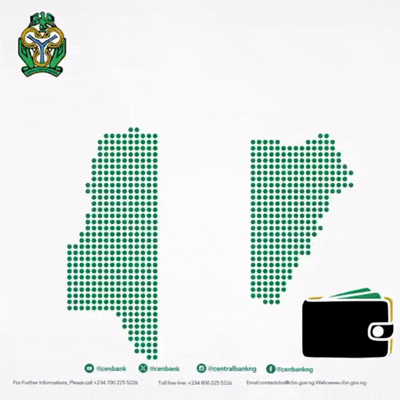The dollar firmed against major currencies on Monday, driven by safe-haven buying from investors fearing the Israel-Iran fighting could escalate into a broader regional conflict as they braced for a week packed with central bank meetings, according to Reuters.
Also, oil prices climbed on Monday, extending Friday’s rally, as the weekend renewed strikes increased concerns that the battle could widen across the region and significantly disrupt oil exports from the Middle East.
Consequently, brent crude futures rose $1.12, or 1.5%, to $75.35 a barrel by 0019 GMT, while U.S. West Texas Intermediate crude futures gained $1.10, or 1.5%, to $74.08. They had surged more than $4 earlier in the session.
Both benchmarks settled 7% higher on Friday, having surged more than 13% during the session to their highest levels since January.
However, as bith countries showed no signs of backing off from their attacks, the prospect that Tehran might seek to choke off the Strait of Hormuz – the world’s most important gateway for oil shipping – raised broader economic risks from disruptions in the energy rich Middle East.
Scheduled weekend talks between Iran and the United States on Tehran’s nuclear programme were also shelved after Israel launched its surprise attack on Friday.
On Monday, the dollar rose 0.14% to 144.3 Japanese yen , while the euro was 0.14% lower at $1.1534.
In early Asia hours, the greenback was steady against the Swiss franc at 0.81, while an index that measures the dollar against six others was steady at 98.25.
Currencies that are positively correlated to risk such as the Australian dollar and the New Zealand Dollar were marginally higher.
“The dollar’s role as a safe haven will surely be tested, and recent price action has been inconclusive,” said Win Thin, global head of markets strategy at Brown Brothers Harriman.
“If the Fed delivers a dovish hold as we expect, the dollar is likely to resume weakening due to the worsening fundamental backdrop in the U.S.”
Geopolitical tensions were the latest twist for investors and central bank policymakers who have been trying to navigate economic uncertainty triggered by U.S. President Donald Trump’s move to reshape the global trade order this year.
Despite the dollar’s broader rise in the past few sessions, analysts were less convinced that the trend could continue until there was more clarity on the tariff front.
The currency has lost over 9% in value this year as investors remain nervous over Trump’s deadline on trade deals that come due in about three weeks, while agreements with major trade partners including the European Union and Japan are yet to be signed.
Investors now will look progress in any bilateral meetings with the U.S. on the side of a Group of Seven leaders meet in Canada.
READ ALSO:Oil Prices Soften As Markets Assess US-China Trade Talks Outcome
Top on the agenda this week is a host of central bank monetary policy decisions, with the spotlight on the U.S. Federal Reserve on Wednesday.
The central bank is widely expected to leave borrowing costs steady but investors will likely lap up Fed’s views on recent data that has broadly indicated softening economic activity even as risks to increasing price pressures stay high.
“What you’re going to see from their growth forecasts is that the shift towards lower growth is very much upon us and that will keep the statement fairly neutral,” Chris Weston, head of research at Pepperstone said.
The Bank of Japan is expected to deliver its interest rate decision at the end of its two-day meeting on Tuesday, with traders largely pricing-in no change to policy.
Expectations are that the central bank could also consider tapering its government bond holdings from the next fiscal year as the government pushes for more domestic ownership.
Central banks in the UK, Sweden and Norway are also slated to unveil their policy decisions.
Against an uncertain global backdrop, gold prices rose 0.22% to $3,435.5 an ounce and stayed just shy of their April record high.
Longer-dated U.S. Treasuries were also marginally lower after Friday’s spike as investors considered the implications geopolitical tensions could have on price pressures.
The Sunday rrsumotion of hostilities have resulted in civilian casualties and heightened fears of a broader regional conflict, with both militaries urging civilians on the opposing side to take precautions against further strikes.
The latest developments have stoked concerns about disruptions to the Strait of Hormuz, a vital shipping passage.
About a fifth of the world’s total oil consumption, or some 18 to 19 million barrels per day (bpd) of oil, condensate and fuel, passes through the Strait.
“Buying was driven by the ongoing Israel-Iran conflict, with no resolution in sight,” said Toshitaka Tazawa, an analyst at Fujitomi Securities.
“But as seen last Friday, some selling emerged on concerns of overreaction,” he said.
While markets are watching for potential disruptions to Iranian oil production due to Israel’s strikes on energy facilities, heightened fears over a Strait of Hormuz blockade could sharply lift prices, Tazawa added.
Iran, a member of the Organization of the Petroleum Exporting Countries (OPEC), currently produces around 3.3 million bpd and exports more than 2 million bpd of oil and fuel.
The spare capacity of OPEC and its allies, including Russia, to pump more oil to offset any disruption is roughly equivalent to Iran’s output, according to analysts and OPEC watchers.
U.S. President Donald Trump said on Sunday he hopes Israel and Iran can broker a ceasefire, but added that sometimes countries have to fight it out first. Trump said the U.S. will continue to support Israel but declined to say if he asked the U.S. ally to pause its strikes on Iran.
German Chancellor Friedrich Merz said he hoped a meeting of the Group of Seven leaders convening in Canada on Sunday would reach an agreement to help resolve the conflict and keep it from escalating.
Meanwhile, Iran has told mediators Qatar and Oman that it is not open to negotiating a ceasefire while under Israeli attack, an official briefed on the communications told Reuters on Sunday.












